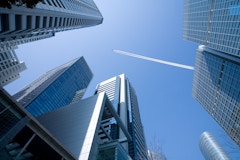
Carbon Lean Facades
With net zero and carbon neutral mandates on the near horizon, New York City has pushed the green building envelope by leveraging incentive-based

With net zero and carbon neutral mandates on the near horizon, New York City has pushed the green building envelope by leveraging incentive-based
The pathway to carbon-neutrality, as urged during the COP 21 in Paris, and the repeated goal for resilient buildings and urban habitats, winds right

The focus of this issue of SKINS is on embodied carbon -- the carbon dioxide (CO₂) emissions associated with materials and construction processes throughout the whole lifecycle of a building or infrastructure.

3.5 billion years ago, cyanobacteria created the foundation for life on Earth by producing the oxygen basis for our atmosphere. Should we once again

Welcome to this edition of the SKINS newsletter, which is all about carbon! As guest editor this month, I am representing FTI’s embodied carbon (EC) working group. This issue highlights several important topics relative to embodied and the trade-offs with operational carbon.


The historical focus on reducing the carbon footprint of a building has recently shifted to include more emphasis on embodied carbon, the carbon


Reducing greenhouse gas emissions from the building sector is critical to limiting global temperature rise to less than 1.5⁰C. Construction and

Facades are increasingly being recognized as a major contributor to whole-building embodied carbon. While designers know how to reduce the embodied

A question for architects and building industry: Can our cities be part of the solution to the challenges facing humanity, or are they intrinsically and inevitably a big part of the problem? To move beyond the latter demands nothing less than a fundamental shift in the way we think about buildings.

Special guests Jennifer O'Connor from Athena Sustainable Materials Institute, Anthony Pak from Priopta, and Stacy Smedley from Skanska join us to discuss embodied carbon.

Awareness of embodied carbon impacts is surging like hurricane-driven floodwaters and altering the landscape of everything in its path. What are the implications for buildings, the facade system and urban habitat? FTI is taking this on with its 2019 Forum series.

Climate change goals will require significant improvements in the way buildings are constructed and operated. Building reuse can combat climate

Life Cycle Assessment (LCA) is a methodology used to quantify the impact of building construction supply chains on the environment in terms of


What environmental impact does one object have on the world? This is the question at the core of life cycle assessments (LCA); the embodied carbon lens. ...the current architectural practice rarely provides enough time to explore this type of examination.